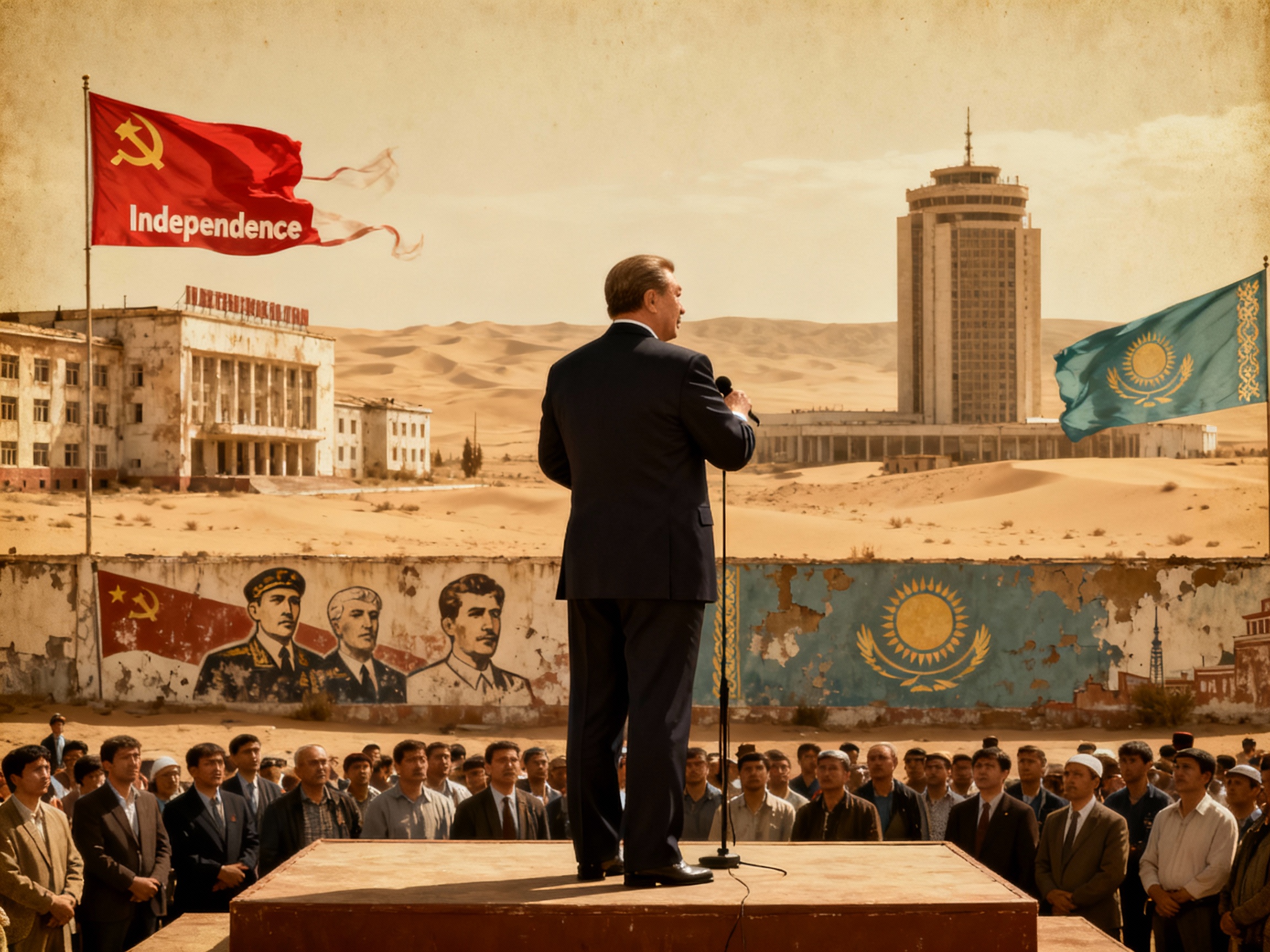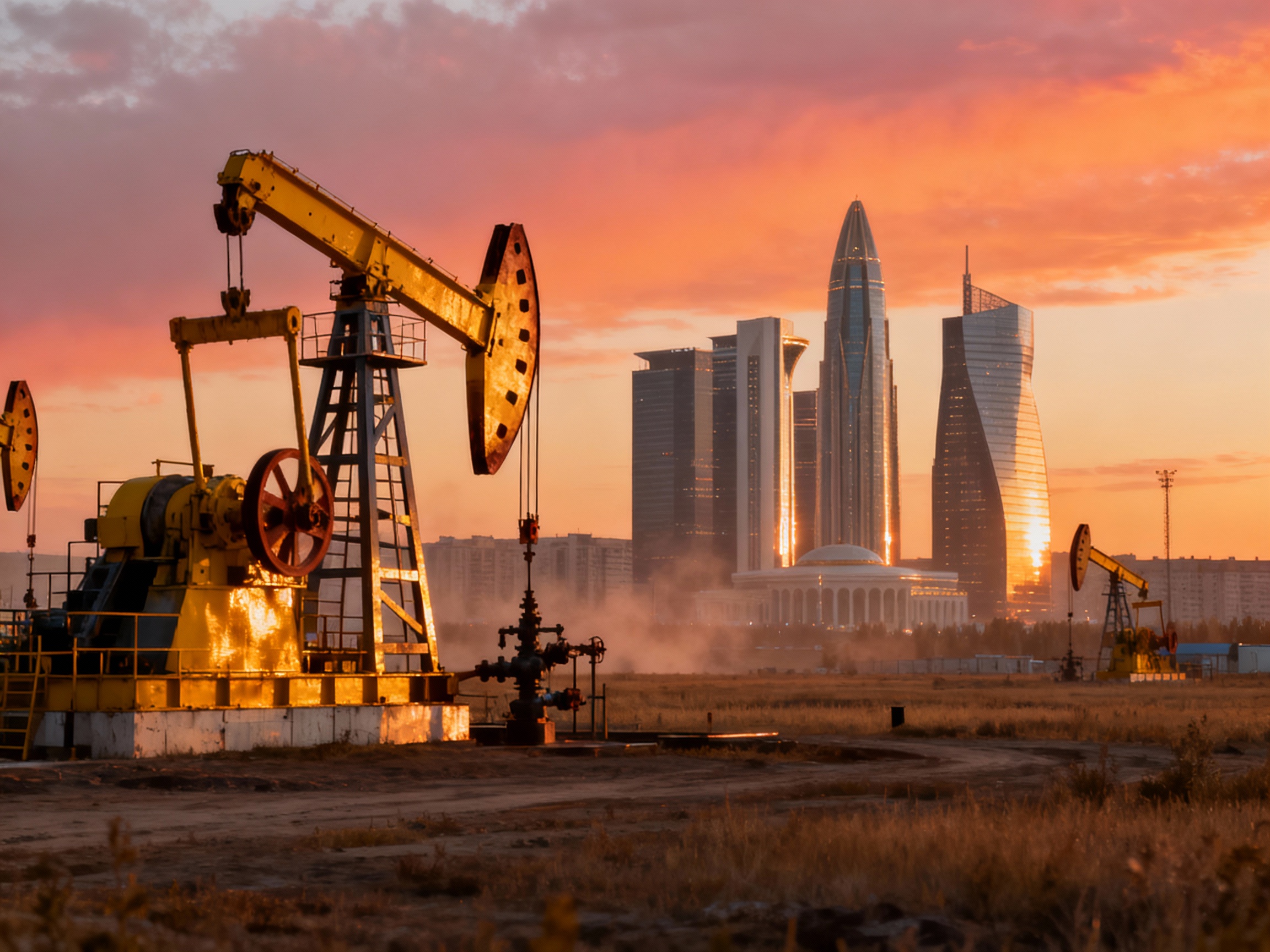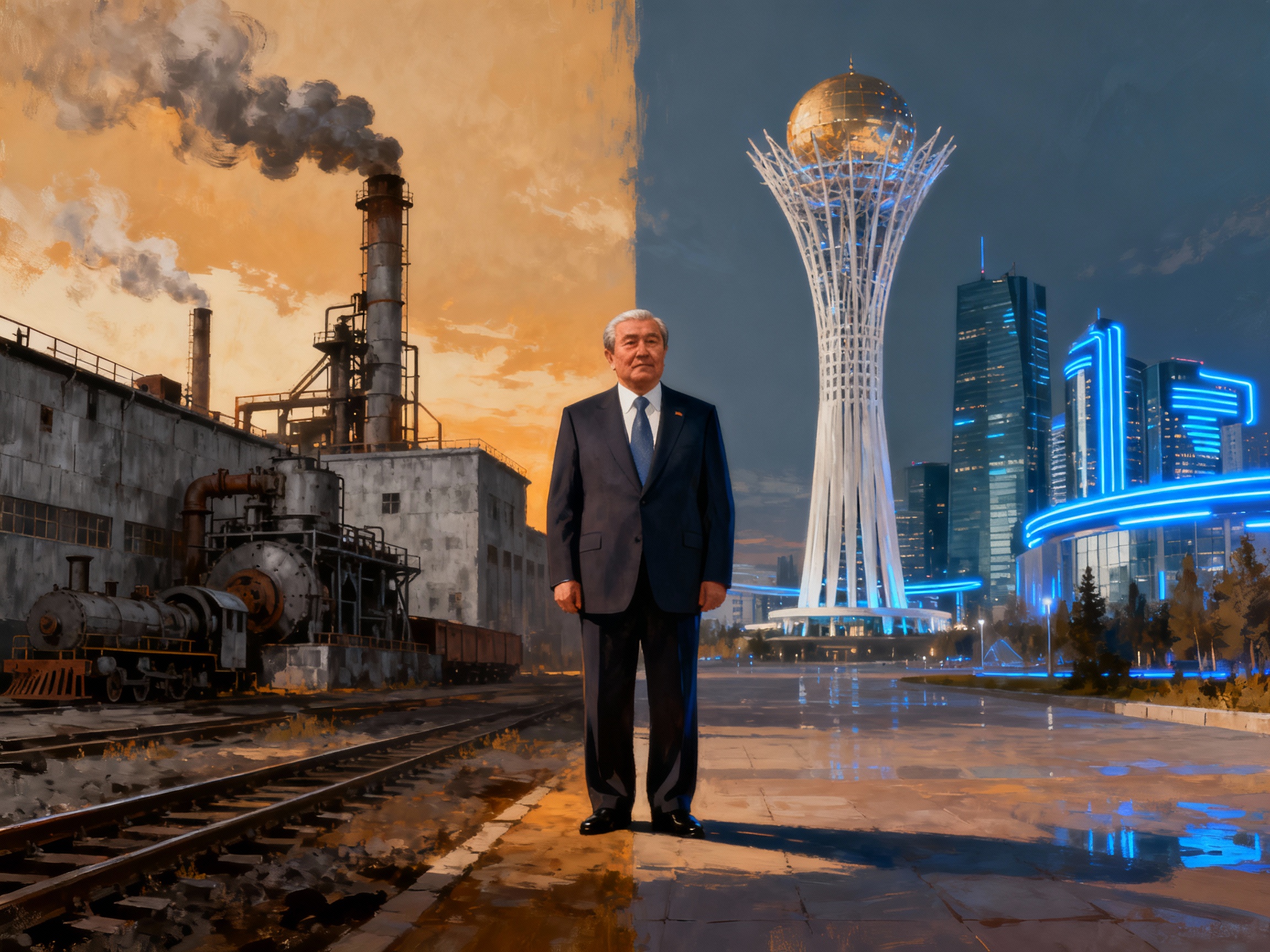
Introduction: Three Decades at the Helm of Kazakhstan
Nursultan Nazarbayev is a man whose name became synonymous with modern Kazakhstan for three decades. Leading Kazakhstan since the Soviet era in 1989 as the first secretary of the Central Committee of the Communist Party of the Kazakh SSR, he managed not only to maintain but also to strengthen his power after the collapse of the USSR, becoming the unchanging leader of independent Kazakhstan until his voluntary resignation in 2019. His rule was one of the longest in the post-Soviet space, leaving a deep and controversial mark on the history of the young state. His leadership coincided with key historical processes: the transition from a Soviet planned economy to a market one, the formation of state institutions of an independent country, integration into the world community, as well as the complex process of searching for national identity.
Formation and Consolidation of Power
The Path to the Top
Nazarbayev came to power in Kazakhstan at a turning point in history. In 1989, he was elected the first secretary of the Central Committee of the Communist Party of Kazakhstan, becoming the first ethnic Kazakh in this position after the removal of Dinmukhamed Kunayev and the brief leadership of Gennady Kolbin. His appointment took place against the backdrop of the December events of 1986, when Kazakh youth protested against the appointment of a Russian leader for the republic. These events became the first mass protest in the USSR and demonstrated the growth of national consciousness.
In 1990, Nazarbayev was elected president of the Kazakh SSR, and after the collapse of the Soviet Union, he became the president of independent Kazakhstan. At the initial stage of his leadership, the country faced serious economic difficulties: hyperinflation, enterprise closures, and a decline in living standards. However, Nazarbayev managed to maintain stability in a multinational country and avoid large-scale interethnic conflicts that shook other post-Soviet states.
Strengthening Presidential Power
During his years in power, Nazarbayev built a power system characterized by a significant concentration of authority in the hands of the president. In 1995, a new Constitution was adopted in a referendum, expanding presidential powers. Subsequent constitutional reforms invariably strengthened executive power.
Table: Evolution of Presidential Power under Nazarbayev
| Year | Constitutional Change | Significance |
|---|---|---|
| 1995 | Adoption of a new Constitution | Establishment of a presidential form of government with broad powers |
| 1998 | Amendments to the Constitution | Increase of presidential term from 5 to 7 years |
| 2007 | Removal of term limits for the presidency | Legitimization of Nazarbayev's lifelong presidency |
| 2010 | Adoption of the law "On the First President — Elbasy" | Granting Nazarbayev special status and immunity |
In 2007, the Kazakh parliament passed a constitutional amendment removing term limits for the first president, effectively paving the way for Nazarbayev's lifelong rule. In 2010, the law "On the First President — Elbasy" (Leader of the Nation) was adopted, granting Nazarbayev lifelong privileges and immunity from prosecution, as well as ensuring his influence on key state decisions even after leaving the presidency.

Political System: Between Stability and Authoritarianism
Suppression of Opposition and Control Over Elections
The political system established under Nazarbayev was characterized by dominance of executive power and restriction of political competition. International observers did not recognize any elections in Kazakhstan as free and fair. Opposition parties faced various forms of pressure, their access to state media was limited, and candidate registration in elections was often hindered.
A telling example was the 2007 parliamentary election campaign, when the ruling party "Nur Otan" received 88.4% of the votes and all 98 seats in the Majilis (lower house of parliament), as none of the six other participating parties managed to overcome the 7% threshold. OSCE international observers criticized the elections for numerous violations, including vote counting fraud and state media bias.
Control Over the Information Space
The media in Kazakhstan under Nazarbayev was under strict state control. The "Media Law" granted authorities broad powers to regulate the media space. Publications critical of the government faced pressure, and the internet was subject to censorship. Freedom House consistently classified Kazakhstan as a "not free" country, noting extremely low levels of political rights and civil liberties.
Repressive Apparatus and Protest Movements
Nazarbayev's rule was marked by numerous protests that were harshly suppressed by security forces. The most resonant were the events in Zhanaozen in 2011, when during the dispersal of an oil workers' protest demanding higher wages and better working conditions, at least 16 people were killed. Another wave of protests swept Kazakhstan in 2022, already after Nazarbayev left the presidency, starting with demands to lower gas prices but quickly escalating into demonstrations against the entire political system, of which Nazarbayev was the embodiment.

Economic Transformations and Their Contradictions
Resource-Based Economic Model
Nazarbayev's economic policy was aimed at integrating Kazakhstan into the global economy through the development of the resource sector, primarily the oil and gas industry. Thanks to the influx of foreign investment in extractive industries and high energy prices in the 2000s, Kazakhstan demonstrated impressive economic growth. The nominal GDP of the country from 1991 to 2024 increased almost 11 times.
However, Kazakhstan's economic model was characterized by a high dependence on raw material exports. More than 55% of the country's export revenues came from oil and gas, making the economy vulnerable to global price fluctuations. Attempts to diversify the economy had limited success, and dependence on the resource sector remained one of the key structural problems.
Social Inequality and Clan Economy
Despite impressive macroeconomic indicators, the wealth from economic growth was distributed extremely unevenly. While in 2001, 46.7% of the population was below the poverty line, by 2023 this figure had decreased to 11.3%, which was still high for a country with such a level of resource export income.
A characteristic feature of the economic system under Nazarbayev was clanism - people close to the president, including his relatives, controlled significant assets in key sectors of the economy. Nazarbayev's daughters and their husbands owned large shares in the banking sector, mining, and oil and gas industries. For example, daughter Dinara Kulibayeva and her husband Timur Kulibayev controlled "Halyk Bank," one of the largest financial institutions in the country.
Table: Main Economic Indicators of Kazakhstan under Nazarbayev
| Indicator | Start of Period (1990s) | End of Period (2010s) | Change |
|---|---|---|---|
| Nominal GDP | About $24.9 billion (1991) | About $288.4 billion (2024) | Growth by 11.6 times |
| Oil Production | ~26 million tons (1991) | ~90 million tons (2019) | Growth by 3.5 times |
| Poverty Level | ~47% (2001) | ~11% (2023) | Decrease by 4.3 times |
| Average Salary | ~14,374 tenge (2000) | ~434,982 tenge (2024) | Growth by 30 times |
Major Infrastructure Projects
One of Nazarbayev's hallmarks was the implementation of large-scale infrastructure projects, the most famous of which was the relocation of the capital from Almaty to Astana (now Nur-Sultan, then back to Astana). This decision, made in 1997, was motivated by both geopolitical considerations (the desire to strengthen positions in the northern regions with a significant Russian population) and the personal ambitions of the leader. The new capital became a symbol of modern Kazakhstan and a demonstration of its leader's ambitions.

Cult of Personality and National Ideology
Formation of the "Elbasy" Image
Reactions
Subscribe
No spam — only new posts and an occasional digest.
Subscribe
No spam — only new posts and an occasional digest.

Leave a comment
Comment